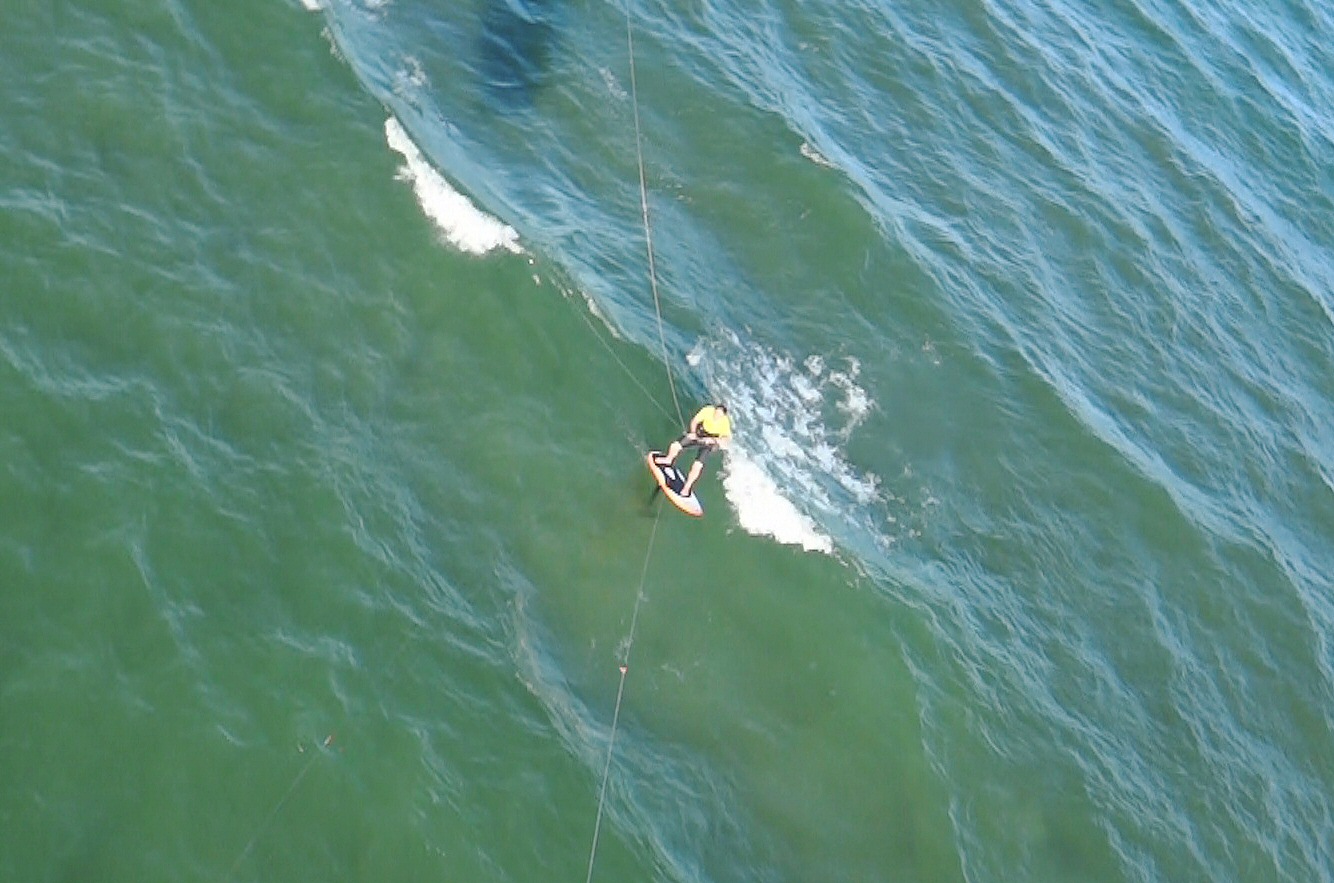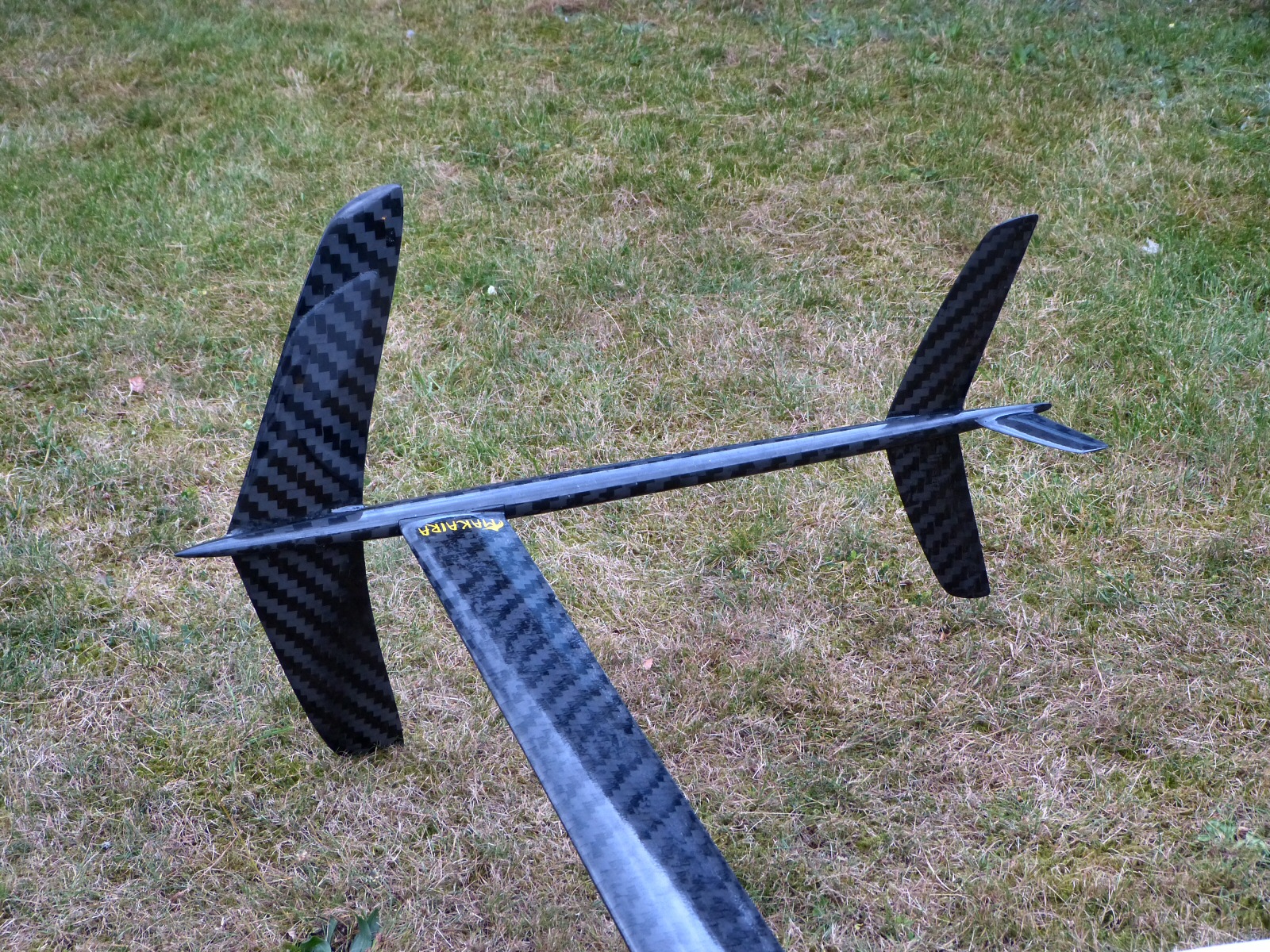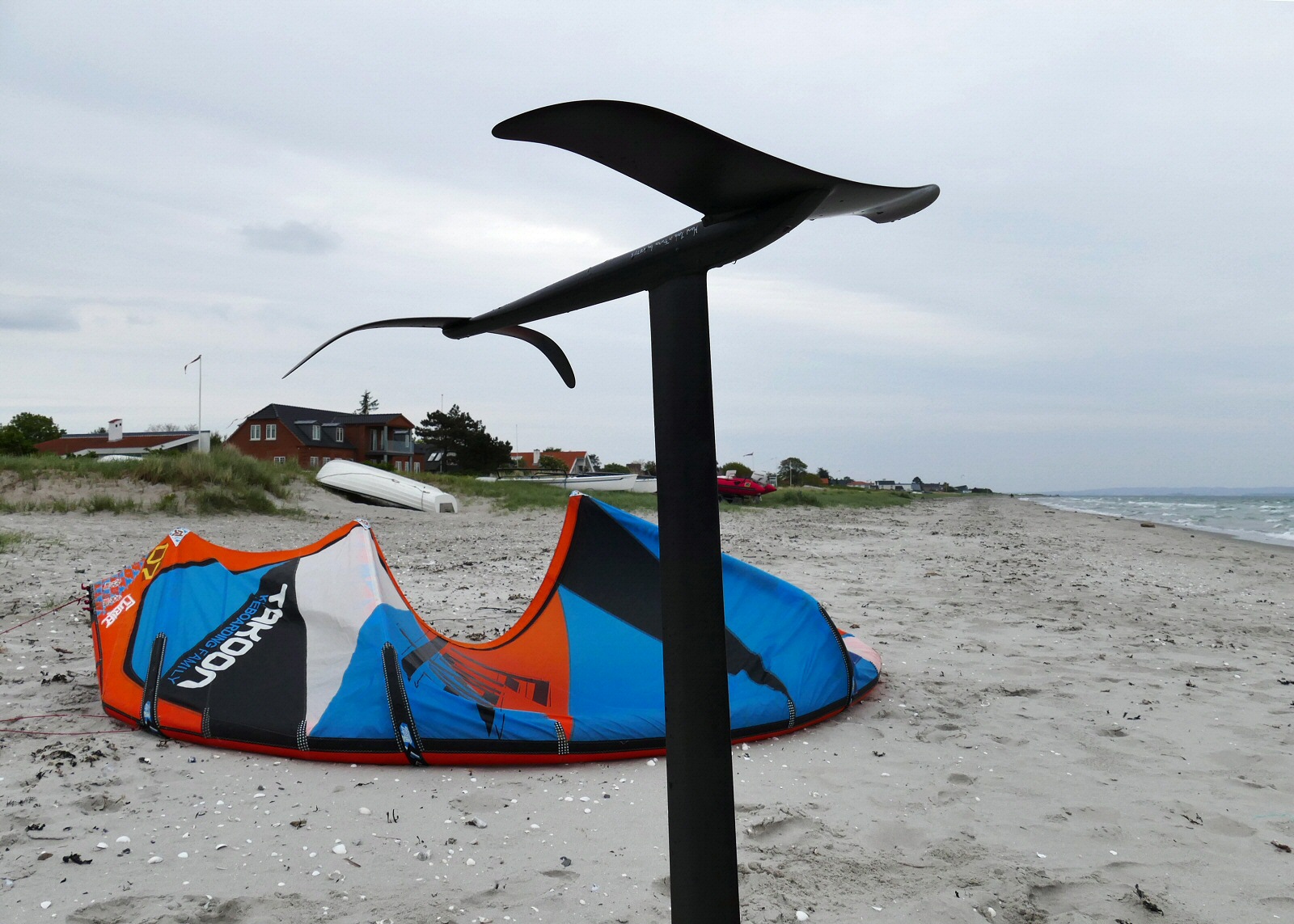Wave oriented hydrofoil
Posted: Thu Jan 14, 2016 3:47 am
I made a 45cm hydrofoil designed for light wind and small wave riding. Following are the design criteria:
Limitations of most current designs:
-The long mast requires the wing to travel on a large arc through the turn. The wing will need to travel 2-3m on a cutback or bottom turn. If you look at most hydrofoil wave videos people are riding straight down the line or doing one turn on to the wave.
-A long mast requires deep water
-Speed oriented foils are often too fast and will outrun the wave (even when not being pulled by the kite)
-Most higher aspect foils require decent board speed and will dramatically stall at slow speed
Design criteria:
-Fast turning
-Shallow draft to allow riding through shallow water and over reefs
-Shorter mast will reduce the arc the wing needs to travel through on a turn.
-Low stall speed
-Compact front wing to limit the wing tip coming out of the water.
Short mast
-Reduce the arc the foil travels through a turn.
-Allows you to ride in shallow water and over reefs
-Accept that you will touch down often and may end up riding on the board at times
Front wing
-Compact, mid aspect design
-Thick profile for low takeoff and stall speed. A thick profile is also strong for impacts
-Front wing anhedral to limit the wing tip coming out of the water with maximum wingspan.
Rear wing
-Relatively small with no anhedral/diahedral for maximum turning. Anhedral/dihedral limits turning (increases tracking).
Fuse
-Thin for efficiency and smoothness through the water
-Strong to take impacts
-Not too long for increased maneuverability.
-I purchased “The Kite Foil” short stainless steel fuse.
Board
-Relatively wide with some volume for stability when touching down. Needs to be very strong to handle frequent touch downs.
-I modified and Airush Slayer 54cm V1.
Results:
The down side:
It took some time adjusting to the short ride height and limiting touchdowns. Unlike a long strut, you need to adjust to the swell, but this is what we do when riding a surfboard on the water, so not difficult. You need to accept frequent touchdowns, but because you are not coming from a great height, it is easy to ride through them. You can’t lean too far back or the front wing will come out of the water.
The upside:
Really direct connection with the foil which allows fast, confident turns. The board and foil feel like one. You can make the same aggressive turns you would with a surfboard. Carving down the line is much easier than a long foil and no worries about hitting the bottom. Unlike with any other setup, I can carve powered down the line in 8-10 knots in small waves and shallow water.
Jumping is MUCH easier than a long foil as there is no delay between loading and coming out of the water. Landing is also much more forgiving.
Learning: My wife is learning and she feels MUCH more confident on the short strut than the long one.
Overall I am very pleased with the results. You might consider it "hydrofoil assisted" surfing because you end up in and out of the water, but it is really fun to ride regardless.
What I would change:
-45cm is the limit to how short the strut should be. Adding 10-15cm would greatly reduce the number of touchdowns and (hopefully) not reduce the maneuverability and direct connection feeling.
-I replaced the initial rear wing with one about 30% larger which increases pitch stability, but did not affect turning speed much.
-I would make the front wing slightly larger with a thicker profile for a lower stall speed. The current wing is good, but it would be better if the stall speed was even slower to make low speed transitions smoother. The thicker profile will limit the top end, but that is not a concern for a surf oriented foil.
Cheers,
-Andrew
Limitations of most current designs:
-The long mast requires the wing to travel on a large arc through the turn. The wing will need to travel 2-3m on a cutback or bottom turn. If you look at most hydrofoil wave videos people are riding straight down the line or doing one turn on to the wave.
-A long mast requires deep water
-Speed oriented foils are often too fast and will outrun the wave (even when not being pulled by the kite)
-Most higher aspect foils require decent board speed and will dramatically stall at slow speed
Design criteria:
-Fast turning
-Shallow draft to allow riding through shallow water and over reefs
-Shorter mast will reduce the arc the wing needs to travel through on a turn.
-Low stall speed
-Compact front wing to limit the wing tip coming out of the water.
Short mast
-Reduce the arc the foil travels through a turn.
-Allows you to ride in shallow water and over reefs
-Accept that you will touch down often and may end up riding on the board at times
Front wing
-Compact, mid aspect design
-Thick profile for low takeoff and stall speed. A thick profile is also strong for impacts
-Front wing anhedral to limit the wing tip coming out of the water with maximum wingspan.
Rear wing
-Relatively small with no anhedral/diahedral for maximum turning. Anhedral/dihedral limits turning (increases tracking).
Fuse
-Thin for efficiency and smoothness through the water
-Strong to take impacts
-Not too long for increased maneuverability.
-I purchased “The Kite Foil” short stainless steel fuse.
Board
-Relatively wide with some volume for stability when touching down. Needs to be very strong to handle frequent touch downs.
-I modified and Airush Slayer 54cm V1.
Results:
The down side:
It took some time adjusting to the short ride height and limiting touchdowns. Unlike a long strut, you need to adjust to the swell, but this is what we do when riding a surfboard on the water, so not difficult. You need to accept frequent touchdowns, but because you are not coming from a great height, it is easy to ride through them. You can’t lean too far back or the front wing will come out of the water.
The upside:
Really direct connection with the foil which allows fast, confident turns. The board and foil feel like one. You can make the same aggressive turns you would with a surfboard. Carving down the line is much easier than a long foil and no worries about hitting the bottom. Unlike with any other setup, I can carve powered down the line in 8-10 knots in small waves and shallow water.
Jumping is MUCH easier than a long foil as there is no delay between loading and coming out of the water. Landing is also much more forgiving.
Learning: My wife is learning and she feels MUCH more confident on the short strut than the long one.
Overall I am very pleased with the results. You might consider it "hydrofoil assisted" surfing because you end up in and out of the water, but it is really fun to ride regardless.
What I would change:
-45cm is the limit to how short the strut should be. Adding 10-15cm would greatly reduce the number of touchdowns and (hopefully) not reduce the maneuverability and direct connection feeling.
-I replaced the initial rear wing with one about 30% larger which increases pitch stability, but did not affect turning speed much.
-I would make the front wing slightly larger with a thicker profile for a lower stall speed. The current wing is good, but it would be better if the stall speed was even slower to make low speed transitions smoother. The thicker profile will limit the top end, but that is not a concern for a surf oriented foil.
Cheers,
-Andrew


